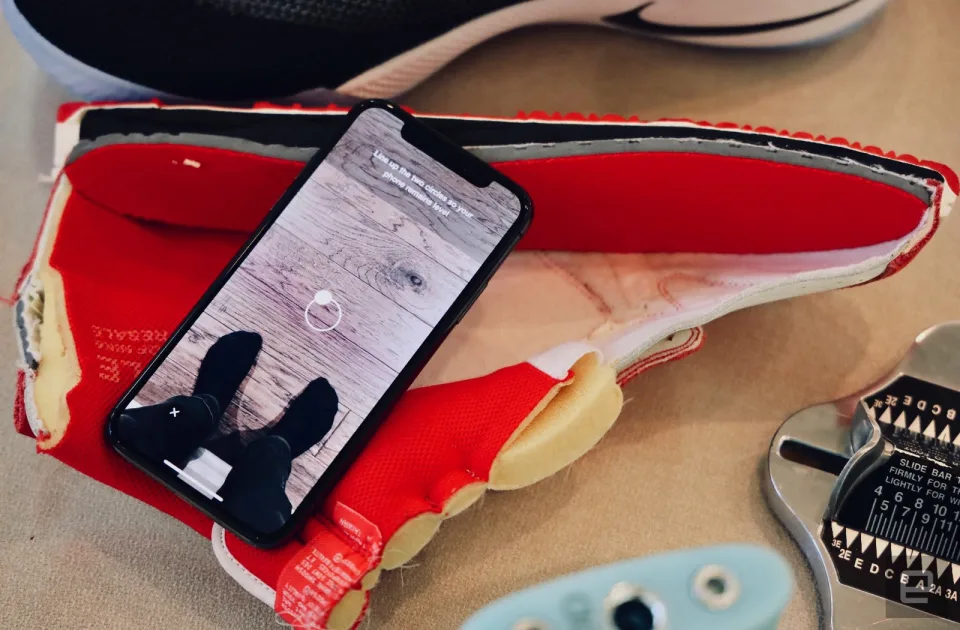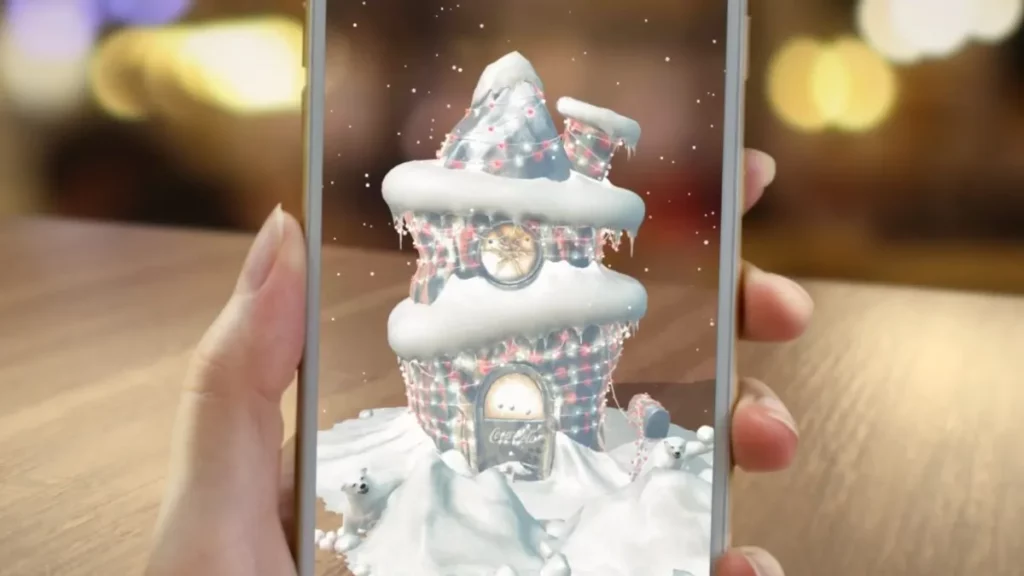Try Before You Buy: How AR is Redefining the Shopping Experience
The marketing world continues to evolve at an unprecedented pace. Brands, big and small, are relentlessly pursuing innovative ways to captivate their audience, differentiate themselves from competitors, and establish a strong presence in the market. Amidst this digital revolution, Augmented Reality (AR) has emerged as a game-changing technology redefining how brands interact with their customers.
What Is Augmented Reality?
Augmented reality is a technology that overlays digital information into the real world, providing users with an immersive, real-time experience.
Imagine being able to virtually try on a pair of shoes from an online store or visualize how a piece of furniture would look in your living room before making a purchase. By bridging the digital and physical gap, AR allows customers to interact with products in a whole new way. This elevates the shopping experience and empowers customers to make more informed purchasing decisions.
Augmented Reality in Marketing
Incorporating AR into your marketing strategy is not a one-size-fits-all process. It requires careful planning, starting with understanding the basics of AR, identifying how it can align with your marketing objectives, designing an engaging AR experience, launching and promoting your AR campaign, analyzing its performance, and optimizing future campaigns based on the insights gathered.
So, to guide you, we will go through a concise yet informative step-by-step process, providing detailed explanations, practical tips, and real-world examples to help you harness the power of AR in your marketing efforts. Wherever you are in your marketing career, this guide will equip you with the skills to create immersive and engaging AR experiences that captivate your audience and set your brand apart in the competitive market.
AR Applications and Examples
Step 1: Embracing the Revolution: Integrating Augmented Reality into Your Marketing Strategy
Integrating AR into your marketing strategy allows you to transform traditional campaigns into interactive experiences, fostering a deeper connection between your brand and customers. It showcases your brand’s commitment to innovation, setting you apart from competitors and aligning with evolving consumer expectations in the digital age.
Step 2: Crafting Your First AR Marketing Campaign AR Experience: Laying the Groundwork for Immersive Consumer Engagement
Once you’ve decided to incorporate AR into your marketing strategy, the next step is to design your AR experience. This involves identifying your marketing objectives and how AR can help achieve them. You’ll also need to consider your target audience’s preferences and behaviors to ensure your AR experience resonates with them. Collaborate with AR developers to bring your concept to life, ensuring the final product delivers a seamless and engaging user experience.
Numerous interactive experiences can be created through Augmented Reality (AR), each tailored to a brand’s specific goals and objectives. Here are some examples of interactive AR experiences:
Virtual Try-On: AR lets customers virtually try on products like clothes, accessories, or makeup. This enhances shopping by showing how products look in real-time without physical trials, increasing purchase likelihood.
Product Visualization: AR allows customers to visualize a product’s appearance in their own space. For example, furniture retailers can use AR to let customers place virtual furniture in their homes to see how it fits and complements their existing decor. This interactive experience helps customers make informed decisions and reduces the guesswork associated with online shopping.
Gamified Experiences: AR can bring gamification elements into marketing campaigns, making them more interactive and engaging. Brands can create AR games that encourage users to explore physical spaces, solve puzzles, or collect virtual items. These gamified experiences entertain customers and create a deeper connection with the brand.
Educational Experiences: AR can be used to provide educational and informative experiences. For example, museums and historical sites can use AR to overlay additional information, videos, or 3D models onto exhibits, providing visitors with a more immersive and enriching learning experience. This interactive approach enhances engagement and knowledge retention.
Location-Based Experiences: AR enriches physical location exploration by providing digital insights into landmarks or attractions, enhancing travel with interactive historical or cultural facts.
Interactive Packaging: AR transforms packaging into interactive experiences, allowing customers to access exclusive content or offers by scanning with their devices, fostering brand loyalty.
Step 3: AR Content Content Creation: Developing Engaging AR Scenarios that Captivate and Convert
Developing engaging Augmented Reality (AR) scenarios is crucial for captivating your audience and driving conversions. Let’s explore some real-world examples of brands that have successfully developed engaging AR scenarios:
Nike: With their Nike Fit AR feature, customers can accurately measure their feet using their smartphone camera. This AR experience allows customers to find the perfect shoe size and fit, reducing the chances of returns and increasing customer satisfaction.

L’Oreal: Through their Makeup Genius app, customers can virtually try on different makeup products, including lipstick, eyeshadow, and foundation. This AR experience lets customers see how the products look on their faces in real-time, encouraging them to make confident purchasing decisions.
Coca-Cola: In one campaign, they used AR to bring their iconic polar bear mascots to life. By scanning specially marked Coca-Cola cans, users could see the polar bears interact with their surroundings through smartphone screens. This AR experience entertained consumers and strengthened the emotional connection between the brand and its audience.

When developing engaging AR scenarios, it’s important to consider your marketing campaign’s specific goals and your target audience’s preferences. The key is to create experiences that provide value, evoke emotions, and encourage customers to take desired actions.
Step 4: Launching AR Campaigns for Maximum Impact Going Live: Tips for Launching Successful AR Marketing Initiatives
Launching successful Augmented Reality (AR) marketing initiatives requires careful planning and execution. To ensure a smooth and impactful launch, here are some tips to consider:
Tip 1: Define Marketing Objectives
Set clear goals like increasing brand awareness, driving sales, or boosting engagement to guide and measure your AR strategy’s success.
Tip 2: Know Your Audience
Understand your audience’s preferences, tech capabilities, and behaviors to customize your AR experience for maximum engagement, considering their device usage, AR familiarity, and online habits.
Tip 3: Choose the Right AR Platform
Pick an AR platform that meets your goals, suits your audience, and fits technical needs, assessing features, user-friendliness, and integration options to ensure it supports engaging AR experiences.
Tip 4: Create Compelling Content
Craft immersive AR content that aligns with your audience’s interests and your brand’s message, focusing on interactive elements and storytelling to enhance user experience.
Tip 5: Promote Your AR Experience
Generate excitement for your AR initiative through social media, email, influencers, and traditional ads, using teasers and exclusive content to drive engagement.
Tip 6: Optimize for Engagement
Ensure users can easily access and interact with your AR content. Conduct pre-launch tests, gather diverse feedback, and monitor metrics like engagement and conversion post-launch for continuous improvement.
Tip 7: Encourage User-generated Content
Motivate users to share their AR experiences online using branded hashtags or rewards, expanding your campaign’s reach and authenticity.
Tip 8: Continuously Innovate
Stay current with AR advancements, regularly updating and refining your campaigns to keep experiences fresh and engaging for users.
Step 5: Analyzing and Optimizing: Using Insights to Enhance Future AR Marketing Efforts
Analyzing data from AR campaigns allows marketers to understand user engagement, conversion rates, time spent in the AR experience, and other relevant metrics. By identifying patterns and trends, brands can gain valuable insights into what worked well and could be improved.
Marketers often use Google Analytics, Artificial Intelligence (AI), Machine Learning (ML) Tools, and AR-specific Analytics Tools, just to name a few. For example, Pokémon GO, a popular AR game, constantly analyzes user behavior and feedback to introduce new features and improvements. After noticing that users were playing the game in groups, they introduced Raid Battles, a feature allowing players to team up and battle against powerful Pokémon. This adaptation resulted in increased user engagement and retention.
So, are you ready to take your marketing efforts to the next level with augmented reality? Start unlocking the full potential of AR, unleash your creativity, and revolutionize how you engage with your audience. Let’s talk! Contact TWLV20 today to integrate AR into your marketing strategy for impactful results.



